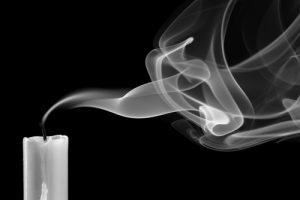The Angel of Death is coming for everyone ever born into this world. It is inevitable. Death cannot be coaxed or tricked or reasoned. She comes for poor and rich alike, good and evil, great and small, man and woman, elder or child. Whether its peaceful or violent, tragic or calm, death comes. Some fear her, others welcome her. In the end, as certain as birth is also as certain as death.

While many may see this event as the end, it should be instead as seen as part of the process of existence itself. Death is not the end of life but part of life. It as important to live the death process as important as to live the birth process. Many take away from this event, for it is indeed terrible and frightening but beyond this physical and sometimes seemingly dark moment, is a transition and an important part of life itself. Whether religious, spiritual or atheist, death is a cycle plays an equal role to birth. One can see it as balancing life, or giving back to the cosmos, or transitioning to the next life. Whether one ceases to exist, or continues to exist, death gives back to the world that permitted one’s existence. Whether one’s composition is reformed for the cosmos, or one’s immortal soul and life energy transcends another plane, whether theist or atheist, one sees a sacred balance taking place.
This part of life must be honored, it must be respected. The individual and those who love and are loved, need to treat the process and event as a sacred event. Whether tears, tales of the good times, or preparation for the next, it is a time to share all emotion. It is a time not to hide from, or try to avoid, but one to embrace, no matter the sadness or pain. Death should be met with dignity, on its terms. Death should be made to be as comfortable and painless as possible, but death should not be hated or cursed, but accepted as an event as real as birth. Many who do not understand these views, will hasten death before it should come for fear of suffering or depair, while others will cling to life too long through any artificial means. It is natural to fight for life, but it is equally natural to accept reality and find comfort during the process. The imbalance between hanging on too long and giving up too soon through the process takes prudence and a true understanding of the death event and what it means.
While it is more difficult to celebrate death as one celebrates birth because of pain and loss, it can still be celebrated in a different way. It can be celebrated as a completion of life. It can be a celebration of the life lived and depending upon one’s views, a new life experienced. An awakening from the cocoon of temporal life and awakening as a new creature into the next.
Many view death and life from multiple prisms. No one prism is more valid than the others and in many cases, the different views can conflict.

The first view of death definitely is shaped from a spiritual arena of thought. Those of religious backgrounds have many different ceremonies surrounding death. From the multiple Hindu rituals aiding the soul into the after life to monotheistic views of judgement and entrance into hopefully Heaven. Many of these religious and spiritual views can grant the dying or the families of the dying a sense of hope. While there are multiple tears, hope and faith promise the suffering and the sufferer that they will once again see each other in some form. This can lead one to many conclusions.
It can help individuals see death in a different light. Death is only a physical terminal date but it is not permanent, but only temporary and transitional to another life. In Christianity, through death, Jesus Christ conquered death and promised Resurrection to all who die after Him. This same promise is issues to those within Judaism and Islam. The promise that Jehovah or Allah will awaken the bodies of the dead. Death hence is not final.
Nor in the Eastern faiths. Death brings about a transition where the soul may again re-emerge on this plane of existence, or finally reconnect with the ultimate reality.
Hence within the spiritual prism of the idea of death, death has no final statement, but only a temporary stamp that leads to transition. While those who are not spiritual face a different reality, one more without this type of hope, there can still be a aura of awe. One can find the imprint of the lost loved one in memories that live on through others. The importance of legacy and values handed down and being kept alive are important for these individuals, even more so than those of spiritual beliefs. While there is no chance or thought of reunion, there still exists the faint whisper of the one who once was in others or in values. There is also the oneness of knowing that the circle of life that takes, also gives back, and through the cycle of life and death, all share a material role to play.
The second view that affects one’s view of death is one’s intellectual self. While faith or belief plays a large role in shaping death and her essence, the intellect nonetheless relies upon the senses to understand life itself. This empirical reality is based in science itself. Hence, while one may possess a strong faith, the intellect still fears what it cannot grasp. It still wonders and can doubt. So while one may at one particular point, express relief that one’s loved one has passed on, there still exists a small existential nudge of fear and doubt. There is indeed hope, but the fear still can exist. The intellect can only adhere to what the senses show it. The sight of the corpse, the sounds of the funeral and the cold reality of no more presence of the loved on Earth is a true reality. These intellectual realities cannot be dismissed by faith alone but are real and true experiences that cause intense suffering. The intellect acknowledges the harshness and separation of death.
The final view of death affects one’s emotional self. The intense sadness of separation of the loved one cannot at times be comforted by faith. While the intellect acknowledges the mark of death and the consequences of it, the heart mourns it and experiences it. It sees death as unfair, unjust and a weapon to take one’s love away. The emotional heart fears death, it seeks to avoid it and it wishes it would never happen. These are all natural feelings connected to survival. One tries to exist as long as one can. It is evolutionary to do so. The evolutionary urge to exist in this plane and the anxiety and intense sadness of separation from those one loves, drives one away from the mere thought of death.
So from this, one can can see a balancing act of views about death. None are truly wrong. Spiritually, intellectually and emotionally, all play an equal truth in understanding death. They balance the full story and allow certain parts to mourn, fear and have hope. They are sometimes experiences at different times. When one is experiencing the immediate experience of death, emotional tears and thoughts dominate. Later, when calmed, more spiritual ideals may return. Then in the coldness of grief, sometimes, fears and intellectual thoughts can emerge. They should all be analyzed and allowed to ferment within the soul. Ultimately, they help shape one’s entire and whole view on death. They complement each other. They show hope, but also permit sorrow and even doubt. They allow natural anxieties about death to manifest that need addressed.
Together, they can allow oneself to mourn but also to have a healing trajectory and also a better reverence for death. They help one to experience death as part of life and to entertain all the emotions that are associated with it. The balance of these differing sensing of what death is permit a more complete view of the event, with each one playing an important role in the process. Hence ironically, death is feared but not feared, sad but joyous, and known but unknown.

Please also review AIHCP’s Pastoral Thanatology Program. The program looks at the needs of the dying as well as the needs of the mourning. It tries to help ministry and healthcare professionals into better understanding the nature of death and helping others transition through this important part of life. The program is online and independent study and open to qualified professionals looking for a certification in Pastoral Thanatology.
Additional Resources
“What Is Thanatology? :A thanatologist studies various aspects of death and dying”. Chris Raymond. June 7th, 2020. Verywellhealth. Access here
“What Happens When You Die”., Cleveland Clinic. Access here
“Facing Death without Religion: Secular sources like science work well for meaning making”. Christel Manning. 2019. Harvard Divinity Bulletin. Access here
“Death in Different Religions”. October 8th, 2019. Endwithcare. Access here
“A systematic review of religious beliefs about major end-of-life issues in the five major world religions”. RAJSHEKHAR CHAKRABORTY, M.D, etc, al. Palliat Support Care. 2017 Oct; 15(5): 609–622. National Library of Medicine. Access here




